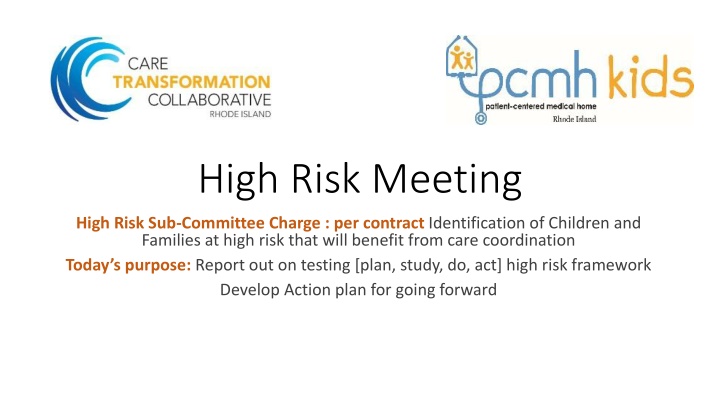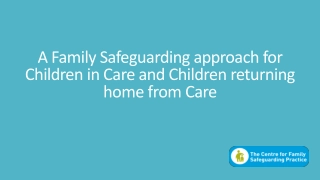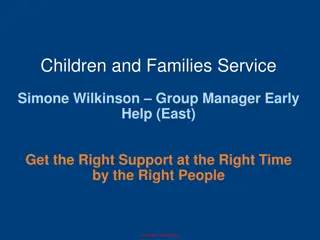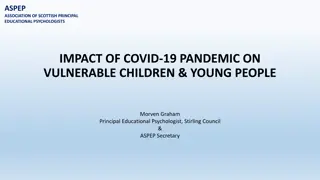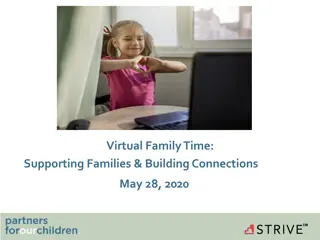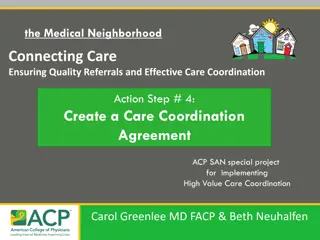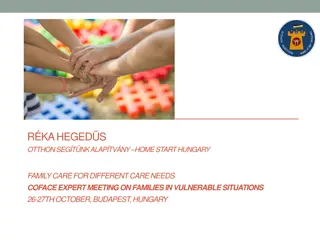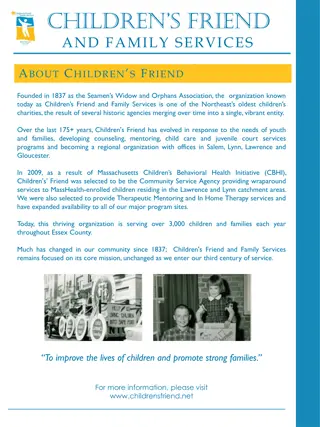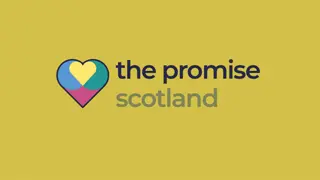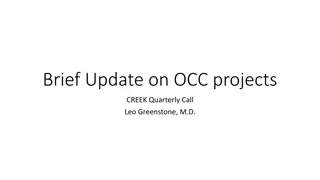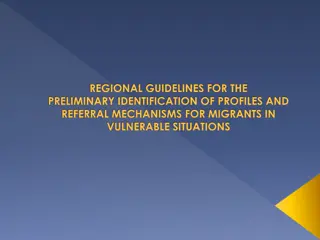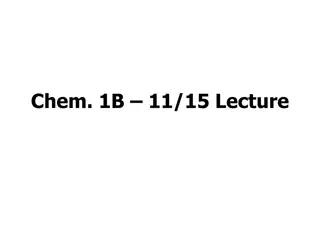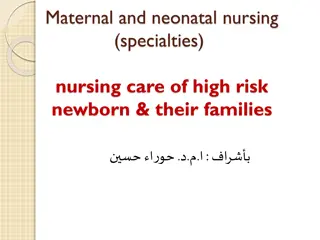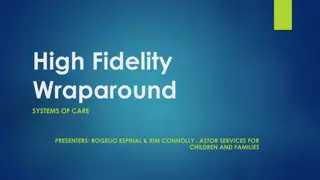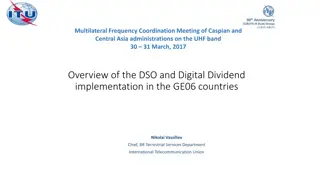High-Risk Meeting: Identification and Care Coordination for Vulnerable Children and Families
The high-risk sub-committee is tasked with identifying children and families at high risk and developing a care coordination plan for their benefit. The meeting agenda includes reviewing the high-risk framework, discussing results and impacts, reflecting on successes and challenges, setting meeting goals with health plans and practices, and creating an action plan for the future. A performance improvement process is used for high-risk identification and engagement, focusing on high-cost/high-utilization areas and poorly controlled or complex conditions. Case studies like "Hasbro," an 18-month-old male with multiple health concerns, highlight the impact of the committee's work.
Download Presentation

Please find below an Image/Link to download the presentation.
The content on the website is provided AS IS for your information and personal use only. It may not be sold, licensed, or shared on other websites without obtaining consent from the author.If you encounter any issues during the download, it is possible that the publisher has removed the file from their server.
You are allowed to download the files provided on this website for personal or commercial use, subject to the condition that they are used lawfully. All files are the property of their respective owners.
The content on the website is provided AS IS for your information and personal use only. It may not be sold, licensed, or shared on other websites without obtaining consent from the author.
E N D
Presentation Transcript
High Risk Meeting High Risk Sub-Committee Charge : per contract Identification of Children and Families at high risk that will benefit from care coordination Today s purpose: Report out on testing [plan, study, do, act] high risk framework Develop Action plan for going forward
Agenda Review of charge and high risk framework process 5 mins Aggregate Results & Impact Category 1 5 mins Aggregate Results & Impact Category 2 5 mins Aggregate Results & Impact Category 3 5 mins What did we learn Successes and challenges 10 mins Meeting goals - discussion with Health Plans & Practices 15 mins Action plan for going forward 10 mins
Performance Improvement Process used for high risk identification and engagement High Risk Sub-Committee Charge : per contract Identification of Children and Families at high risk that will benefit from care coordination You are here Looked within Updated Framework Updated Framework Tested Framework Tested Framework Looked externally Developed Framework Piloted Program Charge Evaluate Action Plan Updated Framework Tested Framework Looked at available tools
Category 1: High cost/high utilization Focus Areas practices selected 2 emergency visits in 6 months (56% of practices chose) 1 hospitalization for BH in 6 months (50%) Patient range: 0 to 150 selected Details can be found in excel spreadsheet (link)
Impact Hasbro 18 mo. old male with 3 ED visits for 2 non-emergent diagnoses, one near-drowning. Frequent missed appointments, not seen for primary care since 8 months of age. Multiple outstanding immunizations. Follow up resulted in catch-up of vaccinations, growth/developmental screening and support for mom with history of depression. Had stopped going for counseling and interested in resuming at time of appointment. Subsequent follow up appointments scheduled.
Category 2 - Poorly controlled or complex conditions Focus Areas practices selected ADHD plus other complicating condition such as anxiety (44%) Asthma and required oral steroids in the past 6 month (44%) NICU stay greater than 1 week Infant with neonatal abstinence syndrome (33%) Other selected Autism Cerebral Palsy Prematurity Depression Patient range: 0 to 172 selected Details can be found in excel spreadsheet (link)
Impact Anchor Pediatrics Family with adopted triplets, now 6 years old (patients since NICU discharge). Initially considered HR due to prematurity (29 wks) & CP. Between the 3 children additional dx now include (but not limited to): fetal alcohol syndrome, developmental delay, VSD, ASD, ODD, DMDD, anxiety. Family relies heavily on NCM/PCP/Staff for emotional support including older siblings and widowed mother. Coordination of multiple ED & hospital admits (medical & psych), coordination with insurer, specialty referrals including HBTS, GI, Neuro, Ophthalmology, Urology, ENT, Psych.
Category 3 - At risk based on gap in care and/or positive risk screen that is suggestive of family/social of determinant of health, environmental concern Focus Areas practices selected Child 9 months with less than 3 prevnar immunizations (33%) 2 year old missing 4th Dtap (56%) Positive screen for depression, substance use disorder and or sexually transmitted infection (33%) Positive screen for early childhood dental caries Post maternal depression screen Homelessness, (lives in shelter) Food insecurity Other Smoker BMI >= 85 percentile Sexually transmitted infection Patient range: 0 to 382 selected Details can be found in excel spreadsheet (link)
Impact - Coastal Narragansett Bay Pediatrics Lilly is an infant whose mother was screened with PHQO and had an elevated score. Through high-risk investigation, it was discovered that the family was homeless after a domestic violence issue. Father was charged with reckless endangerment of child. High-risk intervention provided multiple safety checks, DCF CT involvement and updates, housing and domestic violence resource for parent. Without high-risk intervention it is felt that the mother would not have activated many services for her family due to her mental status at that time.
Total number of high risk patients identified per practice # of high risk patients identified Practice Name Anchor 350 Barrington Family 27 Barrington Pediatric PC 15 Hasbro 120 Children's Medicine Group 47 Coastal - BH 150 Coastal - NBP 180 Coastal - TG 156 Coastal - Waterman 93 Cranston 315 EBCAP 780 East Greenwich 289 Kingston 31 Pediatric Associates 470 Thomas Puleo 30 Northern RI 90 East Side 37 Link to How high-risk care coordination made a difference with a child or family
Practice Discussion on High Risk Process Successes or challenges using high risk framework to identify patients and families that would benefit from care coordination? Team consensus? Reporting out of EHR? Number of patients identified vs available resources? Work flow? Did patients / families identified benefit from care coordination? Using the HR framework, how did patients identified compare with health plan lists? Other?
Discussion with Health Plans & Practices Does this high risk framework and outcomes meet health plan goals? Does this high risk framework and outcomes meet practice goals? Recommendations from health plans and practices? Action plan for going forward.
